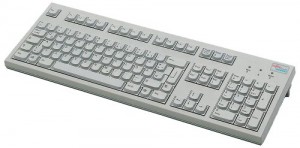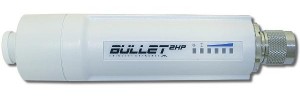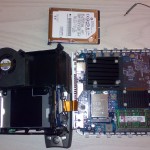Building a modern PowerPC as a workstation
Montag, 25. August 2025 18:21
It’s been a dream for many years getting in touch with the PowerPC architecture as a workstation. As a Linux enthusiast I had been reading ppc64 and ppc64le for decades and always wanted to have an own system beyond the IBM Power servers to give it a try in the workstation environment. As the little-endian supported POWER processors from POWER8 and above made it possible porting existing x86 software with minimal effort it was my intention of running a POWER8 or above system.
So I found mainboards with a usual EATX/µATX form factor manufactured by RAPTOR Computing Systems supporting POWER9 CPUs and leveraging Linux and OpenPOWER™ technology.
As there are not many people that want to build a modern workstation with those components I have searched through all compatibility lists and created my „baby“ from the following components:
- Basic Blackbird™ Bundle with 8-Core CPU
- 2x 128GB TruDDR4 PC4-2933Y registered ECC RDIMM (M393AAG40M3B-CYF / 02JG082)
- XFX Radeon RX 6600 Speedster SWFT 8GB
- Thermaltake View 270 Plus TG ARGB Mid-Tower Chassis
- Thermaltake Toughpower GF1 650W ARGB
- Samsung 990 PRO NVMe M.2 SSD, 4TB
- ELUTENG M.2 PCIe X4 NVMe Adapter
- Thermaltake CT120 Reverse ARGB Snow (2x)
- Thermaltake CT140 ARGB Snow (1x)
- StarTech DB9 Serial Motherboard Header
- Cuifati ARGB Controller 5V
- different jumper wire cables (M2M/F2M/F2F)
Running the system with openSUSE Tumbleweed (ppc64le) makes all hardware run without any issues.

Thema: Computer | Kommentare deaktiviert für Building a modern PowerPC as a workstation | Autor: admin


